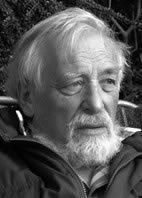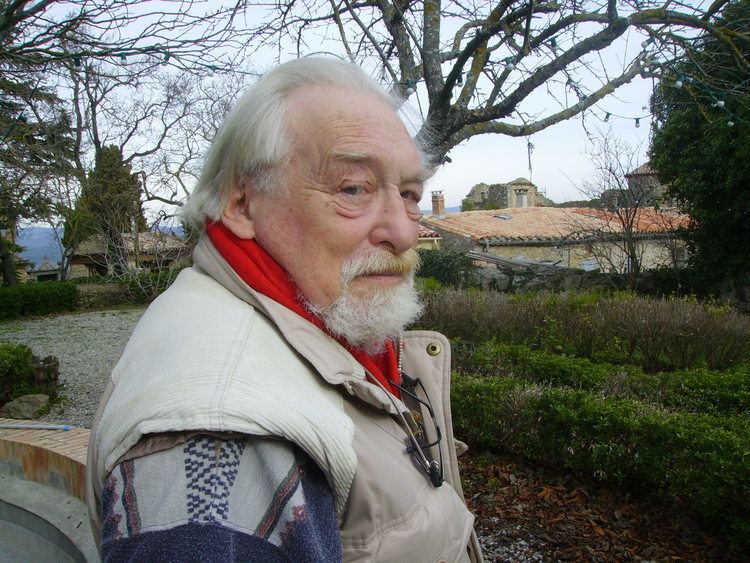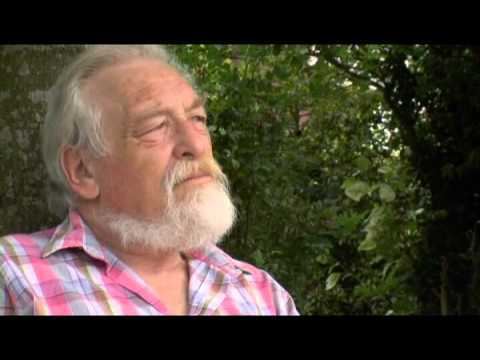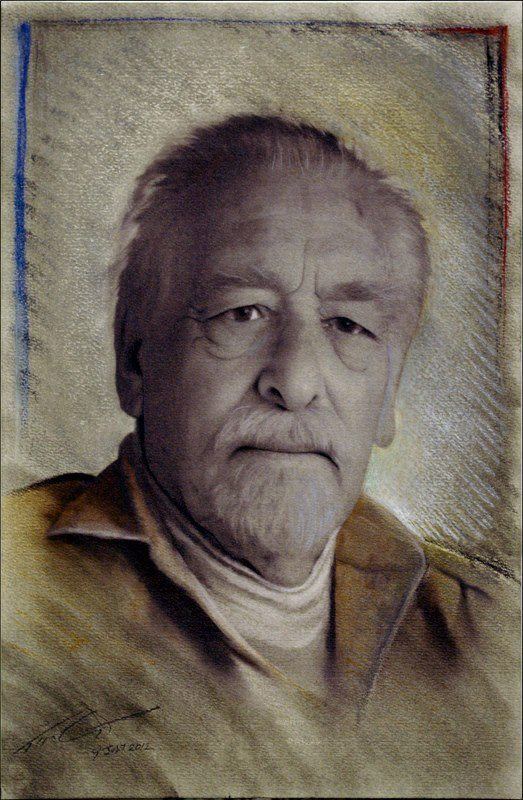Full Name Henry Soskin Children Rupert Soskin Role Author | Name Henry Lincoln Nationality British Ex-spouse Julie Soskin | |
Born 1930 (age 85–86) London, United Kingdom Residence Rennes-le-Chateau, France Occupation Actor, screenwriter, author Education Royal Academy of Dramatic Art Movies Nuits Rouges, Don't Raise the Bridge, Lower the River Books The Holy Blood and the Holy Grail Similar People | ||
Shadow of the Templars by Henry Lincoln
Henry Lincoln (born Henry Soskin, 1930) is an English author, television presenter, scriptwriter and former supporting actor. He co-wrote three Doctor Who multi-part serials in the 1960s, and — starting in the 1970s — inspired three Chronicle BBC Two documentaries on the alleged "mysteries" surrounding the French village of Rennes-le-Château (on which he was writer and presenter) — and later from the 1980s on co-authored and authored a series of books of which, the pseudohistorical The Holy Blood and the Holy Grail was the most popular, becoming the inspiration for Dan Brown's 2003 best-selling novel, The Da Vinci Code.
Contents
- Shadow of the Templars by Henry Lincoln
- Original DaVinci CodeHenry Lincoln
- Early career
- Rennes le Chteau
- The Holy Blood and the Holy Grail
- Dan Brown lawsuit
- Bornholm
- Militi Templi Scotia
- Personal life
- Works
- References

Original DaVinci Code~Henry Lincoln
Early career

Lincoln was born in London in 1930, and studied acting at the Royal Academy of Dramatic Art. Under his original name of Henry Soskin, he worked as both screenwriter and supporting actor. In 1964 he wrote one of the episodes of The Barnstormers (Associated-Rediffusion), as well as starring in two of the episodes. Lincoln also appeared in other television series such as The Avengers (1961 and 1963), The Saint (1967), Man in a Suitcase (1968), and The Champions (1969); as well as in the 1968 film Don't Raise the Bridge, Lower the River. He was co-writer, with Mervyn Haisman, of three Doctor Who stories starring Patrick Troughton: The Abominable Snowmen (1967), The Web of Fear (1968) and The Dominators (1968) and retained the rights to the recurring character Brigadier Lethbridge-Stewart. Henry Lincoln has also written and presented documentaries on other subjects such as The Man in the Iron Mask (Timewatch, 1988), Nostradamus, The Curse of the Pharaohs, and The Cathars (the latter three documentaries formed the television series Mysteries shown on the BBC during the 1980s).
Rennes-le-Château

In 1969, while on holiday in the Cévennes, Lincoln happened to read Le Trésor Maudit de Rennes-le-Château (trans: The Accursed Treasure of Rennes-le-Château), a book by Gérard de Sède about an alleged hidden treasure. The book reproduced copies of Latin parchments that had allegedly been found by a priest within a pillar of a local church.

Inspired by what appeared to be secret codes hidden in the Latin text, Lincoln did some research about the parchments and a possible treasure, writing several books presenting his theories about the area. He also presented three documentaries in the Chronicle series for BBC2: "The Lost Treasure of Jerusalem", shown in February 1972, "The Priest, the Painter and the Devil", shown in October 1974, and finally "The Shadow of the Templars", shown in November 1979.
One of the alleged parchments (which was later shown to be a forgery, since the writing was written in modern French and not in 18th or 19th century French) involved a series of raised letters throughout its Latin text, spelling out a message: À Dagobert II Roi et à Sion est ce trésor et il est là mort (trans: "This treasure belongs to King Dagobert II and to Sion, and he is there dead"; or, "This treasure belongs to King Dagobert II and to Sion, and it is death"). This referred to the Merovingian king Dagobert II, who had been assassinated without a direct heir in the 7th century, thereby ending his branch of the dynasty. Later research, however, showed that de Sède's book had actually been written at the instigation of Pierre Plantard as part of an elaborate hoax to promote a society known as the Priory of Sion, and Plantard claimed to be descended from Dagobert II. Pierre Plantard died in 2000.
The Holy Blood and the Holy Grail
Henry Lincoln is best known for being one of the co-authors of the controversial 1982 best-seller The Holy Blood and the Holy Grail. During the mid-1970s, while Lincoln was lecturing at a summer school, he met Richard Leigh, an American fiction writer. Leigh introduced him to Michael Baigent, a New Zealand photo-journalist who had been working on a project about the Knights Templar. The three discovered that they shared a common interest in the Knights Templar, and between them later developed a theory that Jesus Christ had started a bloodline that had later intermarried with the Frankish Merovingian royal dynasty.
The three of them took their theory on the road during the 1970s in a series of lectures that later developed into the 1982 book, The Holy Blood and the Holy Grail, which became a best-seller and popularised the theory that Jesus had fathered a still extant and powerful bloodline (the true Holy Grail), and was all tied together by a fake secret society known as the Priory of Sion. These ideas were later used as the basis of Dan Brown's novel The Da Vinci Code.
The book has been described as "a work thoroughly debunked by scholars and critics alike". Arthurian scholar Richard Barber has commented, "It would take a book as long as the original to refute and dissect The Holy Blood and the Holy Grail point by point: it is essentially a text which proceeds by innuendo, not by refutable scholarly debate".
Dan Brown lawsuit
Some of the ideas presented in The Holy Blood and the Holy Grail, were incorporated in the best-selling American novel The Da Vinci Code, by Dan Brown.
In March 2006, Baigent and Leigh filed a lawsuit in a British court against Brown's publisher, Random House, claiming copyright infringement. On 7 April, High Court judge Peter Smith rejected the copyright-infringement claim, and Dan Brown won the court case.
Lincoln was not involved in the proceedings, reputedly because of illness; however, in the Channel Five documentary Revealed... The Man behind the Da Vinci Code Lincoln stated that he did not wish to take part in the proceedings because the ideas brought forth in Holy Blood were not even original themselves, and Brown's actions could only be described as, "a bit naughty." An earlier novel had already used the theme of a Jesus bloodline: The Dreamer of the Vine, by Liz Greene, published in 1980. Greene is Richard Leigh's sister and was Michael Baigent's girlfriend at that time; she was not sued for plagiarism.
Bornholm
In 1993, Lincoln wrote and presented the four-episode TV-series The Secret which was produced and directed by Erling Haagensen. The series presented elements of Lincoln's lifelong research on Rennes-le-Château, such as an alleged link between the area and the painting Les Bergers d'Arcadie by 17th century painter Nicolas Poussin. In 2000, Lincoln collaborated with Haagensen to write The Templar's Secret Island, linking their mutual hypotheses about geometry being observed in the placement of medieval churches around both Rennes-le-Château and the Danish island of Bornholm. These speculative findings led them to allege that the Knights Templar had built the churches on Bornholm in a specific pattern, to be used as a series of medieval astronomical observatories.
Author Sharan Newman has noted that the history given in The Templar's Secret Island "is based on a few pieces of data and several assumptions that rely on inaccurate information", also adding that there are no records of Templar activity in Denmark.
Mainstream historians and specialists in medieval architecture believe that the four central-plan churches in Ny, Nylars, Ols and Østerlars in Bornholm were built as a result of the pilgrimages made by Sigurd I of Norway to the recaptured Jerusalem between 1107 and 1111. Sharan Newman commented, "The idea of building a church in the form of the Church of the Holy Sepulcher in Jerusalem wasn't new. A hundred years before the Templar order was founded, the Benedictine church at Saint-Bénigne at Dijon was built with a round nave in imitation of the Holy Sepulcher. Even the Hospitallers built round churches."
"Militi Templi Scotia"
On 8 November 2003, Lincoln was given a self-styled Honorary Knighthood in the self-styled Militi Templi Scotia order, at Newbattle Abbey in Scotland, in recognition of his work in the fields of sacred geometry and Templar history. A description of Lincoln's ceremony of knighthood can be found in Rat Scabies and The Holy Grail by Christopher Dawes, a gonzo-style book about Rennes-le-Château in which Lincoln appears as a central character. "Militi Templi Scotia" has since ceased to exist.
Personal life
Henry Lincoln now lives permanently close to the village of Rennes-le-Château, and can often be seen in the village showing visitors around. His son, Hugo Soskin, author of The Cook, the Rat & the Heretic: Living in the Shadow of Rennes-le-Chateau (Summersdale Publishers, 2008), died in 2012. He is a member of the Freemasons.
